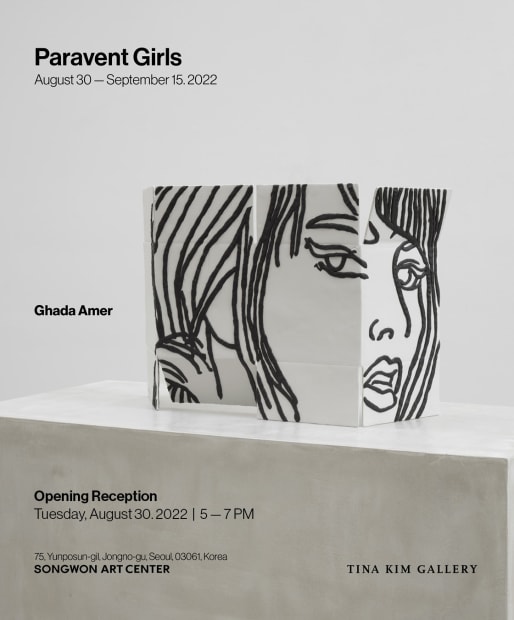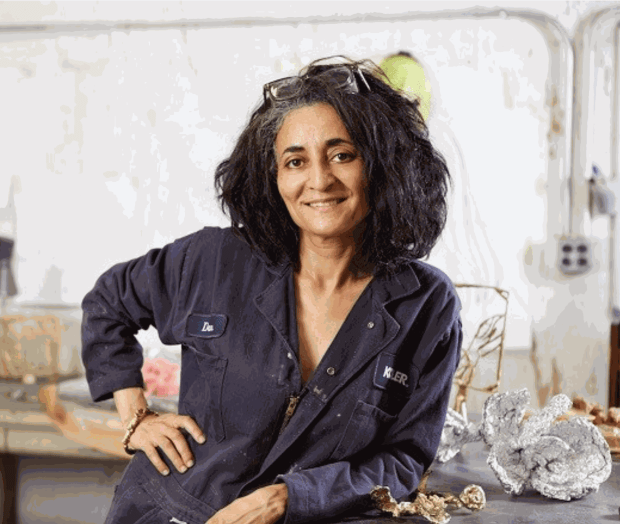-

-
Ghada Amer’s new bronze series starts by finding some object on the street. Empty boxes left behind are placed here and there around the corner. On this paper box of ‘design without design’, there is no fixed address. Being folded, unfolded, and crumpled, it is at once surface and space. From warehouse to warehouse or from the loading deck of a port or an airport to another, it travels covered in the temperature and dust of the ground, unaware of the next step. Now let us call this a sort of ‘flying landscape’ that has seceded from the place. The unfolded box becomes propped up for painting. The artist leaves her unknown women on the surfaces inside and outside. The black ink blots rain onto the repetitive and humble pattern on the surface of the box. Like the principle of gardens where nameless seeds grow into the ground, the address-less boxes become residences of characters and the women become residences of flying landscape. Here, there is no such hierarchy as painting and sculpture, or figure and background.
Between visual image and physical sculpture, the artist makes a choice that evades familiar structures. In the bronze series, Amer uses not the brush that she had used for drawing the images of women but soft clay. Therefore, the drawings, due to the clay, gain the surface of the handprint and traces of its movement. Rubbing, cutting, stretching, kneading, and sticking; drawing with clay embraces by hand all the facial expressions of the character, her wavy hair, brow, plump lips, mesmerizing eyes, and even the traces of sharply fallen ink drops. The ‘surface’ of something being engraved is the same as revealing the levels of time, which also means that the flat perspective of the image is turned into a sculptural perception. And at this point, bronze casting is an appropriate way to record the surface. Casting is literally the trace left by empty space (absence). Its temporality is paradoxical. Though it is touched in the present, it is taxidermized from the touch of the past, and though it is a trace originating from a past that no longer exists, it encounters unexpected bodies in the inflection points and heat of casting, which required high temperature. This paradox gives a déjà vu of the processes of the artist’s many practices that subverted the idea and image of woman even as a woman herself. In my eyes, having seen the production as several seasons changed, the process of temporary boxes and the unknown woman becoming one appeared to me full of meaning, as if it were the ballad of lovers whispering to each other. -
-
In the Studio with Ghada Amer
Conversation with Tina KimGhada and Tina discuss the nature of Ghada's cardboard works and their upcoming metamorphosis into steel sculptures.
Ghada has pushed the boundaries of her techniques into uncharted territory, forcing her to reevaluate and grow as an artist. Watch and learn Ghada's step-by-step process, as well as strong pragmatism underlying her creativity.
Video by Hyunjung Rhee
-

Paravent Girls: Ghada Amer
Past viewing_room






